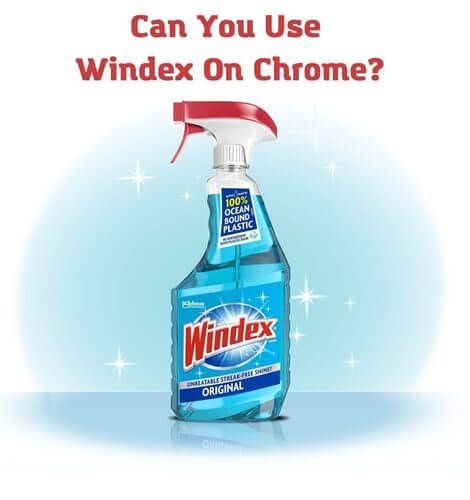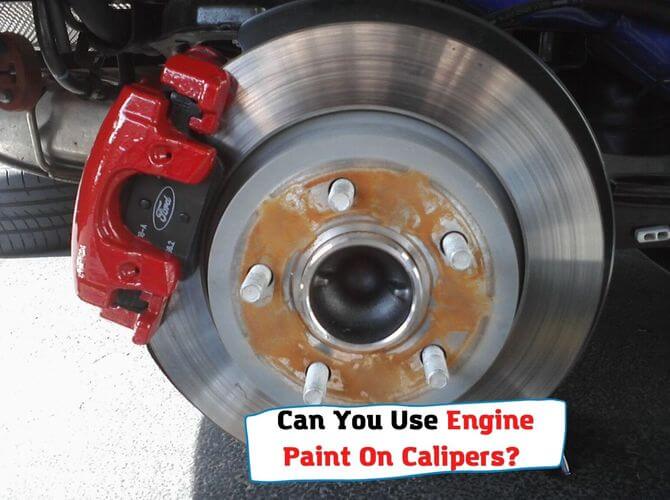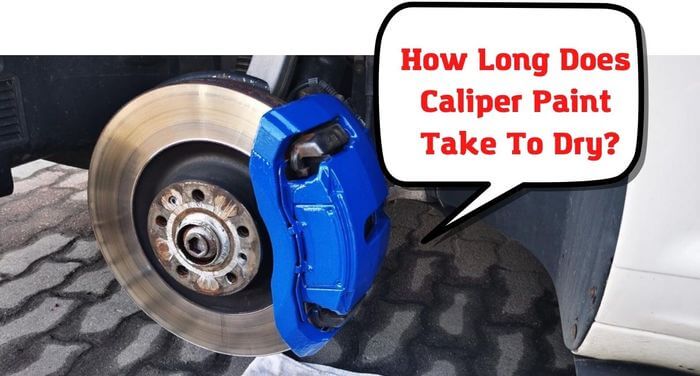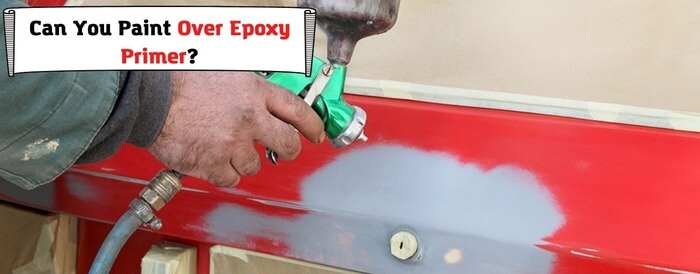Suppose you want the best mirror-like shine out of your car or guitar metallic paint finish. Or maybe you want to eliminate orange peel texture or other defects on your DIY metallic painting project. Is sanding metallic paint before clear coat the way to go? Based on our investigation, we’ll answer that question and other concepts in this article.
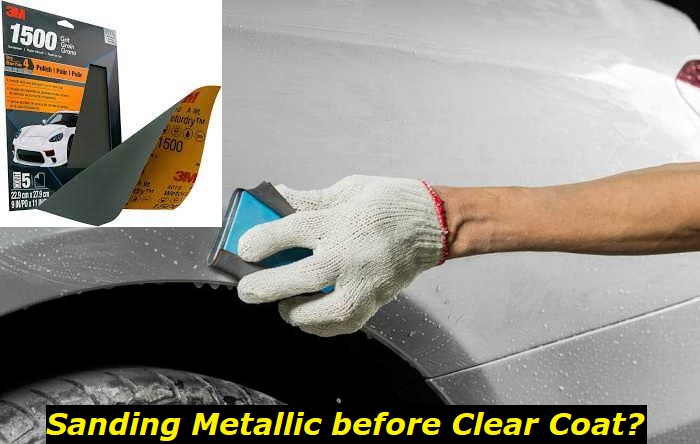
What is Metallic Paint?
Metallic paint comes in handy if you are looking for a high shine finish and sparkle on your car, skateboard, motorbike, boat, or musical instruments.
Metallic paint – also known as polychromatic paint, mica, or metal flake – is a paint that has added metal particles such as aluminum to create a glittering effect. Metal flakes can also be gold, silver, bronze, or mixed and matched with other pigments to produce a metallic sheen. The paint can also contain non-metallic silicone called mica which has metallic properties.
Advantages of metallic paint include:
- The metal flakes reflect light producing a shine
- It makes the body contours of the painted object more visible.
- It’s more resistant to fading.
The metal flakes added to the paint come in different sizes. The larger ones produce a rough finish, with the finer ones producing a smooth finish.
Can You Wet Sand Metal Flake Paint Before Applying a Clear Coat?
Sanding the base coat paint is meant to smoothen the surface before applying clear coat. However, there’s a difference between how you handle metallic paint and other base coat paints. It’s fine wet sanding other base coat paints, but when it comes to metallic paint, It’s a whole different ball of wax.
Wet sanding metal flake paint produces an undesirable effect. When you sand directly onto the metallic paint, you mar and dull the metal flakes making them lose their shine. You also risk forming tiger stripes or mottling on the painted surface.
Tiger stripes result from altering the distribution of the paint’s metal flakes, leaving the color of the painted object looking uneven–the sanded surface doesn’t match other areas. Another effect of sanding metallic paint is exposing the metal elements of the paint to air. This makes them vulnerable to oxidation.
If you have to sand metal flake paint, do it lightly and use fine dry and wet sandpaper–either 2000 or 2500 grit. This can be done to paint with metal flakes of .008-inch size. Do the sanding consistently over the whole painted body for the color to be even. Pretty darn exhausting and expensive, right? And it’s also not recommended unless you are an expert.
So what should you do instead?
Is Color-Sanding Metallic Paint after Applying a Clear Coat a Better Option?
As we have seen above, sanding metallic paint before a clear coat is putting the cart in front of the horse. This leaves us with the option of wet sanding after applying a clear coat. The clear coat provides a protective layer over the metallic base coat, preventing distortion of the metal flakes in the paint when color sanded.
After spraying the last coat of metallic paint, the best practice is to apply at least 2-3 coats of clear before you color sand. However, make sure the clear coat fully dries out first. Color-sanding involves smoothing out the clear coat before buffing. This makes the painted surface attain a mirror-like finish.
During color-sanding, the wet surface between the clear coat and sanding paper serves to smoothen out any imperfections or dust in the paint. You then polish using polishing compounds to remove any scratches left by the sanding process to make the surface shiny.
What are the Benefits of Applying Clearcoat?
Clear Coat – polyurethane, varnish, or sealant – is the paint with no pigment or color. Below are the benefits of applying a clear coat:
- It has UV blockers that prevent fading by protecting the painted surface from UV rays from the sun.
- Polishing can easily remove spotting and shallow defects on the painted surface.
- It halts the oxidation of colored base coats, especially metallic ones.
- It improves the appearance of the painted surface by making it shiny.
- It enhances the durability of the base paint.
How Many Layers of Clear Coats Can You Apply on a Painted Surface?
If you plan to wet sand, the recommended number of clear coats to add to a painted surface is three to four. If not, one to two coats are enough. Applying many layers of clear coat doesn’t mean the painted surface will become glossier; hence no need for more than four layers.
Once you apply a layer of clear coat, wait for at least 20 minutes before you use another layer of clear coat over it. Allow the final layer applied to dry overnight.
What Grit Sandpaper and Sanding Blocks Should You Use During Color Sanding?
After applying multiple coats of clear, you can start color-sanding using an aggressive (600-800) grit sandpaper to remove an orange peel effect and any visible imperfections. This is because finer sandpapers round off high points instead of cutting them off. You can then use 1500-grit followed by 2000-grit wet sandpaper to remove scratches left by the aggressive grit sandpaper.
Repeat clear coating and sanding a couple of times to slowly level out the surface until it’s flat, smooth, and dull. You can also use a tack rag to remove any dust and debris from surfaces between the sanding processes and before applying the final polish.
Use a flat sanding block/pad on a flat surface and a curved sanding pad on a curved surface since it conforms to the shape of the edges it’s used on. While sanding, ensure there’s good lighting and that the sanding surface is wet to make the sanding process visible. This prevents over sanding or under sanding.
Since not all sandpapers can be used for wet sanding, the standard type of sandpaper you can use is 3M’s Wetordry available at your local hardware store.
How Do You Wet Sand Clear Coat Without Affecting Underlying Paint?
Since modern clear coats are more rigid and thinner, sanding them too many risks compromising the protection they offer on the paint. That’s why you need to be careful when wet sanding.
Here are steps to follow when wet sanding a clear coat:
- Soak the sanding paper in water overnight or 15 minutes before you begin sanding to prevent it from absorbing moisture in the sanding process.
- Get water mixed with a bit of dishwashing soap to lubricate the sanding surface.
- Tape off surfaces that you don’t want to interfere with.
- Start sanding with 600-grit sandpaper on a sanding block to remove the textured surface. Apply firm and even pressure while moving in straight lines to make the sanding scratches visible.
- After sanding, wipe and dry the surface with a clean towel or air nozzle. Check whether the surface has signs of wear-through.
- Remove the scratches left by the 600-grit sandpaper by wet sanding evenly with a 1500-grit sandpaper followed by a 2000-grit sandpaper. When done, the surface will appear chalky and dull.
- Wash with soapy water.
- Apply polishing compound and buffer with a variable speed buffer fitted with a foam pad or wool to a mirror finish.
This leaves the surface shiny.
Can You Wax a Clear Coat Finish?
Yes, wax creates that extra shine and protection. It’s usually applied after polishing the clear coat. However, avoid waxing on new paint. A suitable time to wax a newly painted surface is after 30 days when it has hardened and has had enough time to breathe. If it hasn’t cured or hardened enough, it can easily peel.
Ensure you wash the painted surface before waxing to remove dirt, grease, or debris. Some waxes need to be applied regularly after a few weeks, while others can last up to six months. You can tell if the wax is still present by running your finger over the surface. A waxed surface has a smooth touch, while an unwaxed surface has a rawer touch meaning it’s time to reapply.
Can You Paint Directly Over a Clear Coat?
The clear coat may get cloudy or wear out over time, exposing the paint underneath and causing it to fade or be damaged. As a result, you may wonder if it’s a good idea to paint directly over the clear coat.
Well, the answer is no. That’s because the clear coat is rigid and smooth. This makes it difficult for the paint to stick to it. Making proper preparation ensures the paint adheres to the sealant. If not, the paint ends up peeling, and you end up wasting time and money on the paint job.
Removing the clear coat and reprime is required to get the best results if you want to paint a large area. And if you’re going to paint a small surface, scuff up the old clear coat before applying the new paint. This will make the paint stick well.
Can You Paint a Clear Coat on Top of Another Clear Coat?
Yes, you can. But first, you must sand off the existing clear coat layer with sandpaper and sanding block before you reclear. This creates a surface for the new clear coat to adhere to. Also, ensure that the clear coat you want to put on is similar to the existing one.
Takeaway
Now you know whether to sand metallic paint before clear coat. Sanding is a great way to eliminate paintwork defects and level a painting surface for a smooth finish. But it would be best if you did it sparingly and when necessary.
Before you embark on the real task at hand – doing the paint job – experimentation is key. Get a test panel for paint and play around with the different painting and sanding techniques until you find the sweet spot. This can save you a whole lot of mess and resources if painting is not your wheelhouse.
- Can You Unmix Paint: Techniques, Consequences, Alternatives - February 23, 2024
- Does Primer Need to be Mixed? Effective Primer Application - February 22, 2024
- How to Make Old Paint Usable Again: Retrieving and Preserving Paint - February 21, 2024
